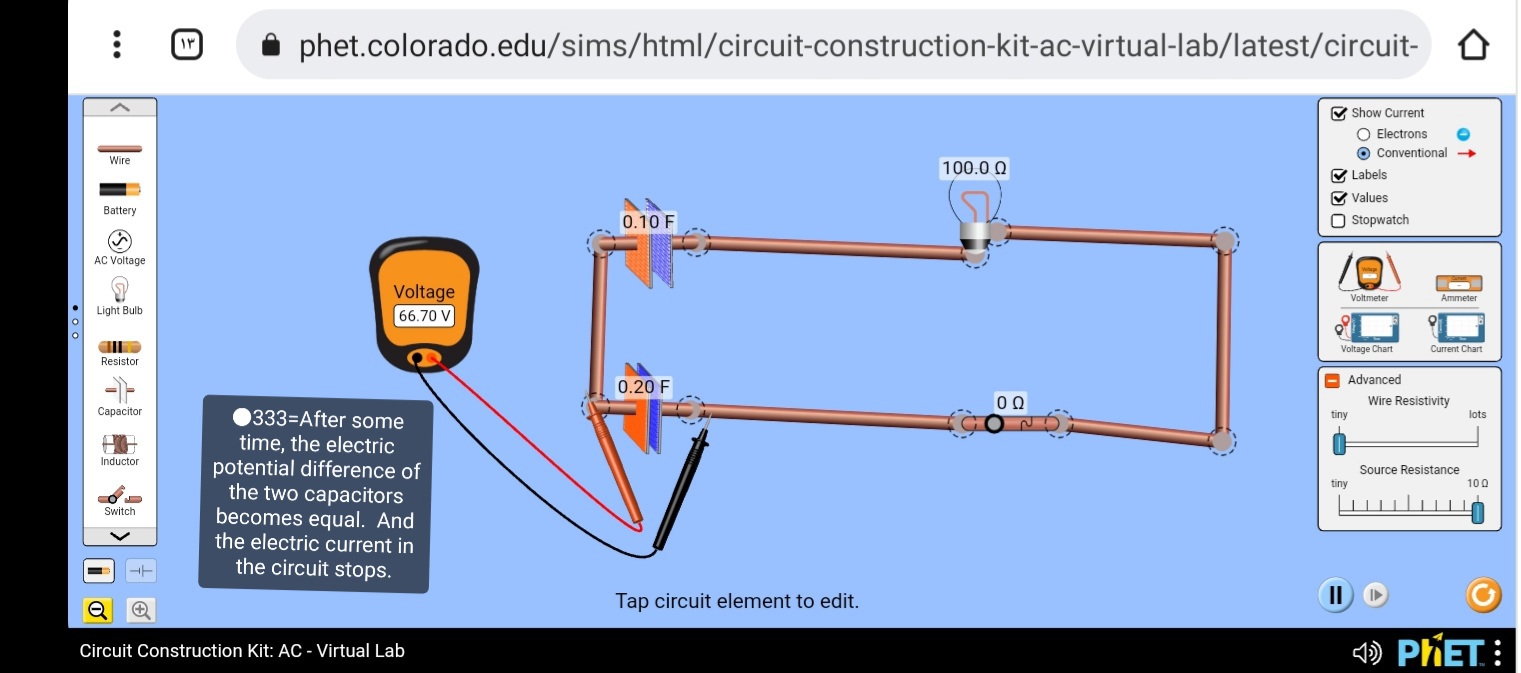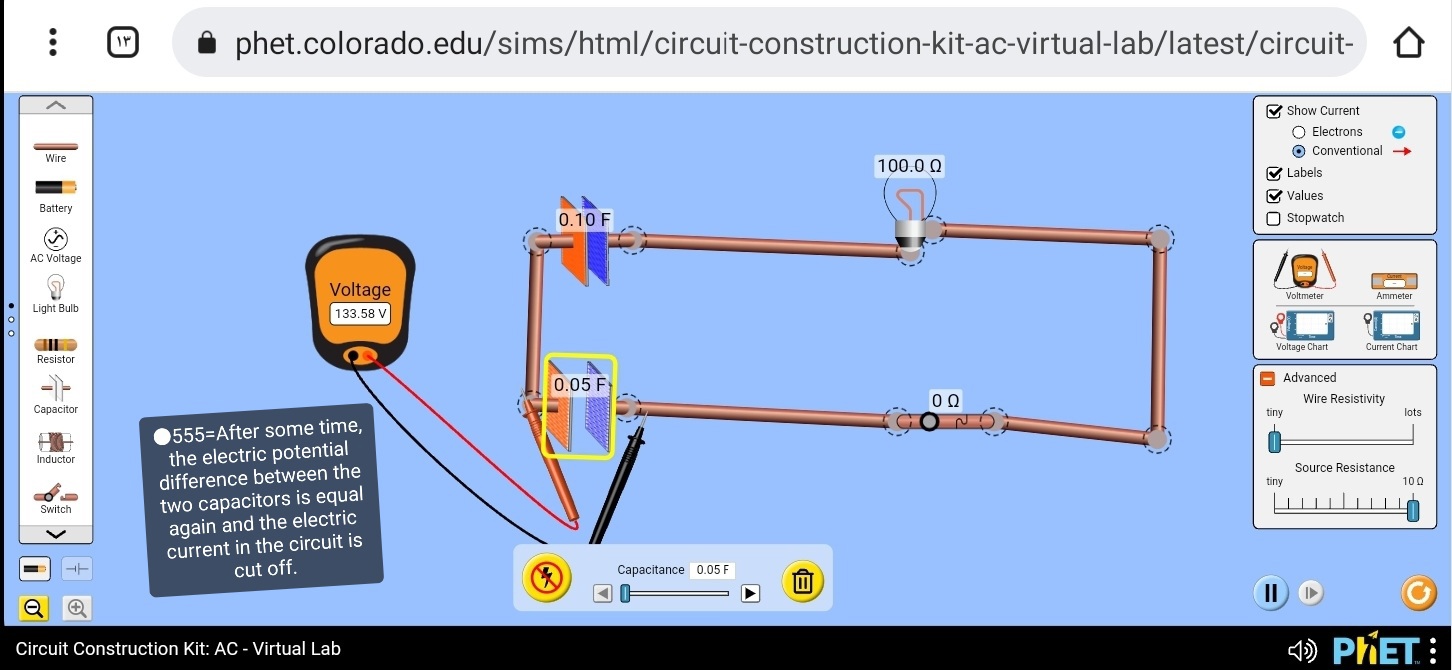
We charged two capacitors with a battery and the electric potential difference of each of them is equal to 100 volts. Then we made this electric circuit using light bulbs and switches.

We double the capacity of one of the capacitors. As a result, its electric potential difference is equal to 50 volts. We close the key. Then the electric current is established in the circuit. And the lamp turns on.

After some time, the electric potential difference of the two capacitors becomes equal. And the electric current in the circuit stops.

We change the capacity of the capacitor again and its electric potential difference changes. As a result, electric current is established in the circuit. And the lamp turns on.

After some time, the electric potential difference between the two capacitors is equal again and the electric current in the circuit is cut off.

We change the capacity of the capacitor and the capacity of the capacitor is equal to the initial state. Again, the electric current is established in the circuit and the lamp turns on.

After some time, the electric current in the circuit stops. Compared to the first case, the electric potential difference of the two capacitors has not changed. Because the electric charge in the circuit has been stable.
